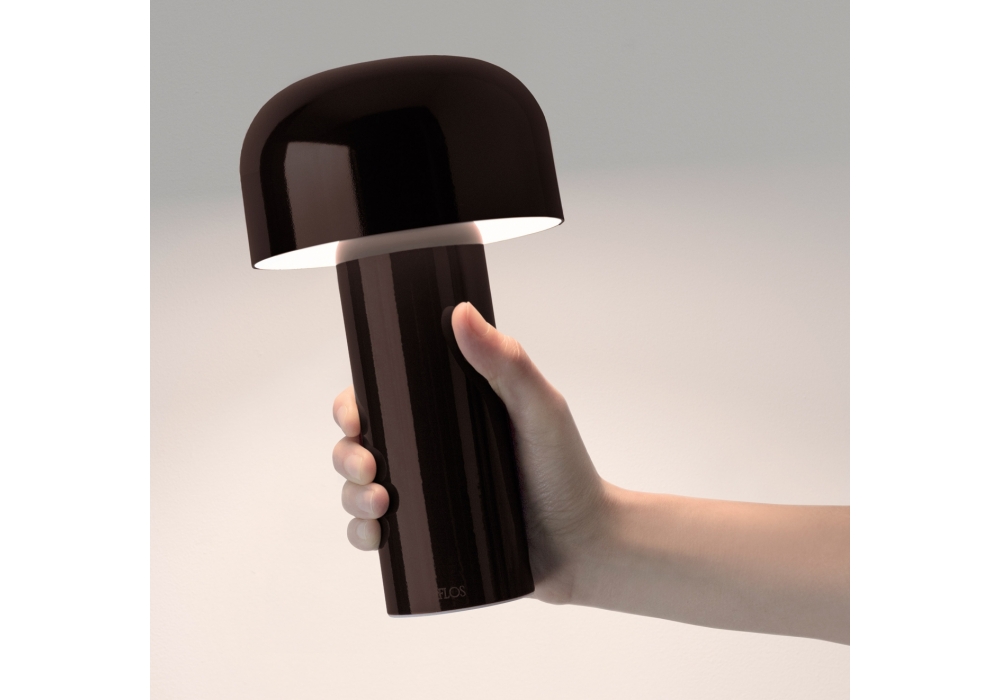

Icon: Bellhop was an indoor lamp and now Flos have launched the outdoor version of it. And we’ve noticed pretty much since that, I’m not claiming by any means to be the first portable, battery-powered lamp, but since we launched Bellhop, there have been a number of other lamps that have come up around the world of a similar typology, which just goes to prove that the technology has now opened that world up.
Bellhop lamp portable#
We were sort of on the cusp with the Bellhop lamp where technology really did allow a very viable portable lamp. Technology advances at such a pace it opens up opportunities for different types or different archetypes of products. And maybe in two or three years’ time, we might be able to get 50 hours out of it. Ten years ago you might have got two, three hours out of it. So the lamp that we’ve produced now, the Bellhop, on a medium power of light, lasts about 20 hours, or 24 hours, which is incredible. And they’ve not only quadrupled or more in their battery life but charging time is better, the size of them is better and as time goes on, I’m sure it will improve again. If you can go back 10 years, batteries didn’t last very long.

And they’d always said that no, up until that point because of battery life. The concept was always to produce a lamp that would have a long enough battery life to make it a viable product –we’d approached Flos many years earlier about doing a lamp that was battery powered. So plastic is more resilient and paint doesn’t come off and all those kinds of things. It’s more durable because the original metal version is painted and it’s a movable lamp, so there’s more opportunity for you to drop it, over knock it over or that kind of thing.

Bellhop for Flos is much better engineered. For mass-produced products, you’re developing every component of the lamp specifically for that project instead of using off the shelf components and trying to make them work into the design that you’ve done.

I con: So partnering with Flos to launch it commercially was an opportunity for you to refine Bellhop further?Įdward Barber: We definitely refined it much, much more. When we went into production and to make it more cost-effective and to make it more durable, we did it out of a hard plastic. The Design Museum lamp was made from metal because it was easily made in a small batch. So you end up using existing components and fabrication tends to be more elementary. Some of our projects are four years in the development, lighting tends to be two to three years in development, and for the Design Museum, we only had a number of months. Because the projects are typically well underway when they realize that they need something. The biggest thing is that when you’re doing a site-specific project you typically don’t have so much time. What is the process like of making something that’s supposed to be bespoke for a room and then making it into a commercially available product that’s supposed to be mass marketed?Įdward Barber: The difference between those two projects, whilst the light itself is visually very similar, the internal workings of it are quite different. Icon: Bellhop was originally designed for the Design Museum. Icon spoke to Edward Barber as the Bellhop went on sale in the UK. Based on an earlier lamp the pair created for the London Design Museum, the Bellhop is now a family of nine distinct pieces, including a forthcoming streetlight model. Plywood and perspex were used in the development of the Pilot Table, 1999, and Stencil Screen, 2000.All photos: Germano Borrelli ‘There comes a point in the life of a product where technology makes things possible,’ says Edward Barber, one half of design duo Barber & Osgerby, about their cordless, battery-powered Bellhop light family.īarber & Osgerby first launched the first Bellhop lamp, a cordless battery-powered lighting system for Flos in Milan last year, since then it has developed into a sophisticated line of products. Much of Barber and Osgerby’s early work involved the folding and shaping of sheet material, influenced by the white card that they had used frequently in architectural model making. Known for their roguish designs such as the Tip Ton chair for Vitra and the Tab Light for Flos, the East London-based pair have been showered with a number of prestigious awards including the Jerwood Applied Arts Prize for Furniture, and most recently they were awarded the title of Royal Designers for Industry by the Royal Society of Arts. They founded their own architecture and design studio – Barber Osgerby – in 1996. “The pencil is the ultimate tool for the transfer of ideas from mind to paper.” - Edward BarberĮdward Barber and Jay Osgerby, both born in England in 1969, studied architecture and interior design together at the Royal College of Art in London.


 0 kommentar(er)
0 kommentar(er)
